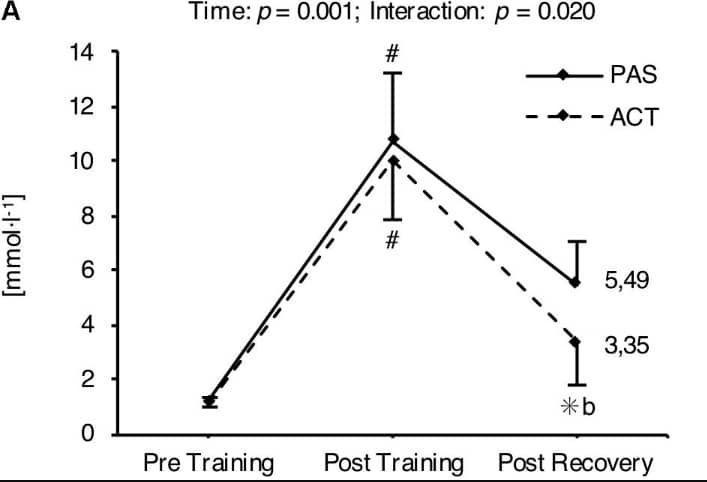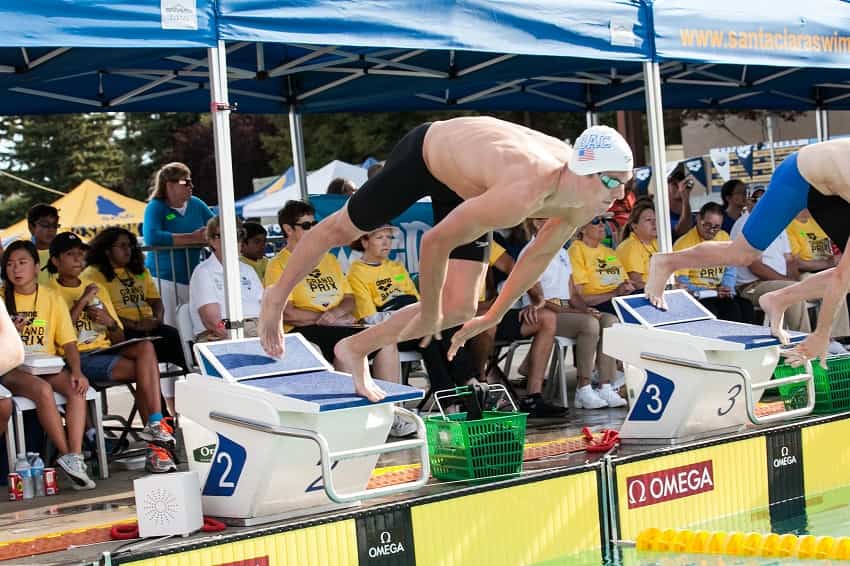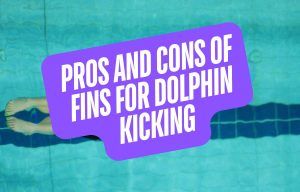It’s usually the last thing we wanna do either in competition or in training.
After all, you summoned every last ounce of willpower and physical energy to slay the main set, and now you lay a twisted heap on the pool deck, not wanting to move or talk.
Certainly, the last thing on your mind is warming down. Waste of time. I’ve already done the work and gotten the gains I wanted. I’m outta here.
But not so fast.
While there is a laundry list of reasons to stick around for a few extra minutes after swim practice and complete the warm-down, we don’t usually think of it as a way for us to improve performance.
It’s usually the recovery benefits that are preached upon. Doing some light warm down helps flush metabolic waste, gets blood flow to affected areas, including joints, ligaments and muscles.
Warming down helps our nervous system to recover (a critical yet not totally understood part of the recovery process), preserves performance levels (super key with those pesky two-a-days!) and can help us to reset mentally after a thorough thrashing in the pool.
As it turns out, it can also improve performance in the water.
Boost Your Training with a Targeted Warm-Down
A study [1] took a group of 26 male athletes in their early 20s and had them do a series of high intensity interval workouts spread out over a month. The HIIT workout protocol was chosen as this type of exercise leads to high lactate levels in the blood.
The athletes did their little workouts and were then separated in two groups: the first were assigned to perform 15 minutes of “moderate jogging” within five minutes of completing the HIIT work, while the other group was told to do nothing after working out, echoing what a lot of us to post-practice.
Everyone was tested before and after the training cycle on a treadmill for their VO2 max, maximum running velocity, O2 maximum, ability to sprint repeatedly, and their anaerobic lactate threshold.
While all the athletes experienced small to significant changes in each of those measurements, there was one area where the athletes differed significantly.
First, the researchers were a little surprised to see that the active recovery didn’t “water down” the high-intensity training. Because it wasn’t deleterious on performance (in fact, it turned out to be the opposite), doing low intensity training during warm-down is another way to get more training in without having to load up on more high-intensity work.
But the big difference was that the active recovery group saw a big jump in their lactate threshold. Doing just a little bit of jogging after some sprint running work dramatically increased the rate with which the athletes were able to clear lactate from their blood.

Usually, we think of warming down as solely being a recovery activity. A way to gear down after a tough session.
But as this study suggests, it’s part of your training.
As the researchers note, to increase the efficiency of the training you are doing planning post-main set recovery is “possibly just as important as the prescription of the training itself.”
Let that sink in for a moment.
The stuff you do right after the hardest set of the day is likely just as critical to your long term success in the pool as those lung-busting and muscle-achin’ main sets.
Putting This Knowledge to Use
Can you do 10-15 minutes of easy aerobic swimming at the end of a hard workout?
You bet!
It just takes the discipline (and the time) to get it done.
An extreme example of this kind of loading up on lactate + clearing it work is evident in one of Cam McEvoy’s “hardest sets of ever” which featured a set of 8×50 from a dive @2:00 designed to send McEvoy’s lactate levels sky-rocketing. Once the sprint 50s were done, McEvoy swam a long series of 150s on a descending interval (36 in total, in fact).
Here’s a couple other examples of what this kind of training could look like:
- 8×75 kick all-out @4:00 (targeting 100 goal time) + 10×100 swim/kick no bubbles @:25 rest
- 8×50 all out from a dive @3 + 10×100 free swim with perfect technique @:20
The next time that your coach gives you a warm-down forget sighing and grumbling and instead appreciate another opportunity to get even faster in the water.
More Stuff Like This:
The Swim Meet Warm Up: Everything You Need to Know About Preparing to Swim Fast. From the science behind it, what you should do if the water is too crowded, to best practices for fast swimming, here is everything you ever wanted to know about the swim meet warm-up.
Why You Should Be Grading Your Effort After Practice. One of my favorite ways to stay consistent and accountable in practice is this simple technique. Takes about three seconds, and will keep you honest about the effort in the water.














